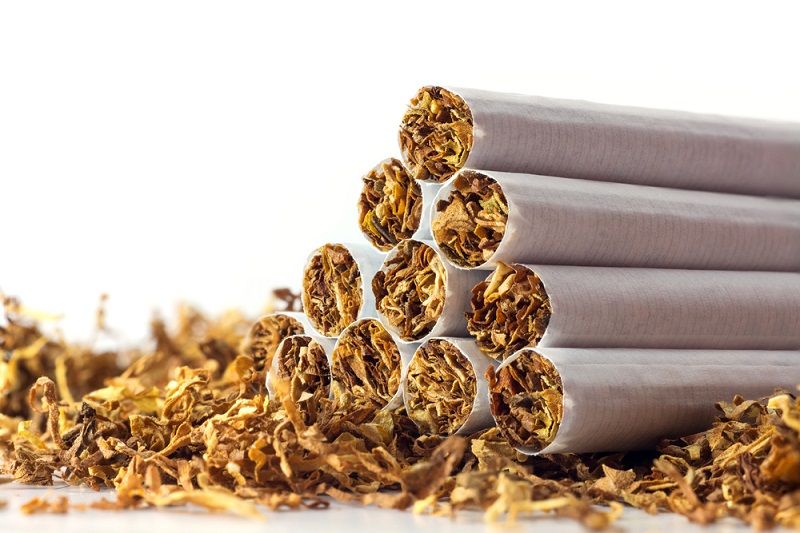The FDA Wants to Take Nicotine Out of Tobacco. How Do You Do That?

Changes could be coming to cigarettes in the U.S.: The Food and Drug Administration (FDA) announced today (March 15) that it is taking steps to lower nicotine levels in cigarettes. But exactly how do you take the nicotine out of tobacco?
The agency plans to propose a new rule that would limit nicotine levels in tobacco, with an ultimate goal of lowering the amount of the compound to nonaddictive levels, FDA Commissioner Dr. Scott Gottlieb said in a statement. Currently, the FDA is seeking public comment, and additional data, on how to go about developing such a rule.
"This new regulatory step … could help avoid millions of tobacco-related deaths across the country," Gottlieb said.
Although people may think of "nicotine" and "tobacco" as synonymous, there are indeed ways to separate one from the other. [Kick the Habit: 10 Scientific Quit-Smoking Tips]
What the FDA is proposing is called a low-nicotine-content cigarette, in which the actual amount of nicotine in the product is capped at a certain amount, said Andrew Strasser, an associate professor of behavioral health in psychiatry at the University of Pennsylvania Perelman School of Medicine.
One way to do this is through genetic engineering. This means that scientists would modify genes in the tobacco plant so that those that control nicotine production are shut down, Strasser told Live Science. The resulting tobacco wouldn't have any nicotine, and this tobacco could be combined with regular tobacco to create low-nicotine cigarettes.
Such low-nicotine-content cigarettes already exist for research purposes. And there have been commercial versions — a company called Vector Tobacco produced a low-nicotine-content cigarette called Quest from 2002 to 2010, according to Forbes.
Sign up for the Live Science daily newsletter now
Get the world’s most fascinating discoveries delivered straight to your inbox.
But these products shouldn't be confused with so-called "light" cigarettes. With light cigarettes, the design of the cigarette is altered in a way that could, in theory, deliver lower amounts of nicotine if they were used in a specific way, said William Shadel, associate director of the Population Health Program at Rand Corp. For example, these products had ventilation holes to dilute the tobacco smoke with air. But these products still have the same amount of nicotine as regular cigarettes. And studies have found that smokers can get large amounts of nicotine from these products by blocking the ventilation holes or by inhaling more deeply.
Smokers are "very good at getting the amount of nicotine they want from the cigarettes," Shadel said.
In contrast, cigarettes made with tobacco that is genetically engineered to have a low nicotine content cannot be manipulated in this way. With these cigarettes, "more vigorous puffing is not rewarded more nicotine," Strasser said.
So could these cigarettes actually work to reduce nicotine addiction and prevent tobacco-related deaths? More research is needed to answer that question, but Strasser and Shadel agreed that early research is promising.
For example, a 2015 study published in The New England Journal of Medicine found that smokers who were assigned to use cigarettes with low nicotine content (between 0.4 and 2.4 milligrams of nicotine per gram of tobacco) smoked fewer cigarettes per day, and were less dependent on nicotine, than those who used regular cigarettes (with 15.8 milligrams of nicotine per gram of tobacco). In a 2016 study, Strasser and his colleagues similarly found that low-nicotine cigarettes were associated with reduced smoking.
"This move is very exciting and very encouraging for our field," Strasser said of the FDA announcement.
Researchers still need to examine exactly how much nicotine should be in a cigarette to reduce nicotine dependence, Shadel said. And there's still the question of whether such a rule should be implemented immediately or gradually.
"Do you rip the Band-Aid off slowly or quickly?" Strasser said. "How quickly do you move to reach the new standard of nicotine content?"
Original article on Live Science.

Rachael is a Live Science contributor, and was a former channel editor and senior writer for Live Science between 2010 and 2022. She has a master's degree in journalism from New York University's Science, Health and Environmental Reporting Program. She also holds a B.S. in molecular biology and an M.S. in biology from the University of California, San Diego. Her work has appeared in Scienceline, The Washington Post and Scientific American.










